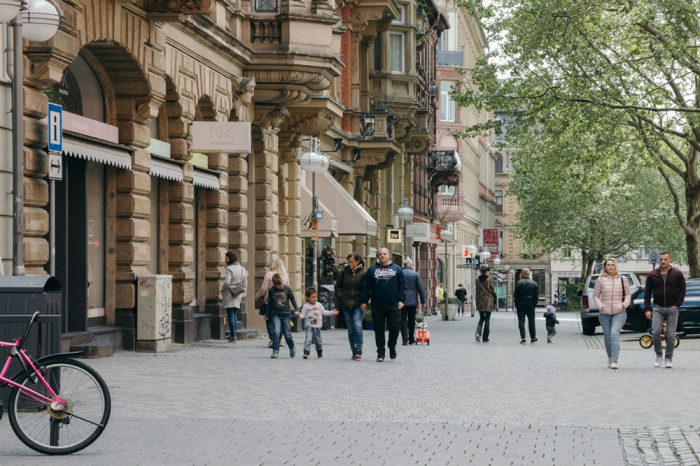Postcard from the perfect German layover

Wiesbaden isn’t the first destination one thinks of when planning a visit to Germany.
Yet, Wiesbaden, a medium-sized city with a population of about 280,000, is a perfect destination for anyone wanting to experience a slice of everyday life in Germany. Some readers of this column will know the city because the U.S. Army has its European headquarters nearby.
A little over a century ago there were numerous upscale hotels built exclusively for tourists lured here by its hot springs. Kaiser Wilhelm II even vacationed here. Then came World War I and everything changed.
One of the few remaining traditional thermal spas is Kaiser Friedrich Therme. Just be warned that swimming attire is prohibited. In other words, you are expected to be fully nude.
Other reminders of Belle Époque-era Wiesbaden are everywhere.
The architecture and overall cityscape struck me as more Parisian and less German. Think wide streets with townhomes and façades that span several styles, though everything in the city center blends together. Intermixed are modern buildings, a legacy of postwar German rebuilding.

Then there are the numerous squares, which reflect the urban planning of the 19th century when Wiesbaden served as the capital of the Duchy of Nassau, an independent country from 1806 until its annexation by Prussia in 1866. (Germany, as we know it today, consisted of numerous kingdoms, duchies and principalities until its unification in 1871.)
The Nassau dynasty was responsible for transforming Wiesbaden from a provincial backwater. They built or patronized the major civic, cultural and religious landmarks: The grand Market Church (Marktkirche) that rivals some cathedrals in size, the museum and palaces, including the baroque Biebrich Palace on the northern bank of the Rhine River.
If you go
Wiesbaden is easily reached by train from Frankfurt’s airport. Otherwise, the drive by car is less than 20 miles. This makes it perfect for a two-night layover.
Plan your visit around a Wednesday or Saturday, when the twice-weekly farmers market is held behind the Market Church and New Town Hall (Neues Rathaus).
I stayed at the Mercure Hotel Wiesbaden City, which, as its name suggests, is within walking distance of almost everything to see and do.
Spires and Crosses, a travel column exclusive to The Christian Post, is published every week. Follow @dennislennox on Twitter and Instagram.





























